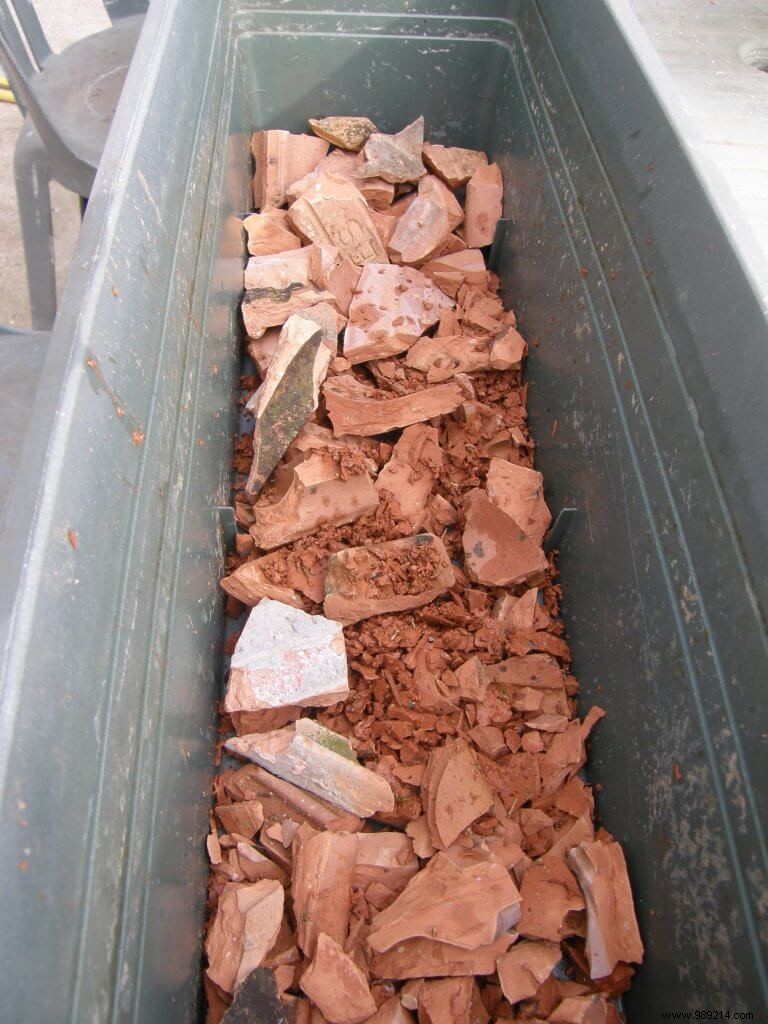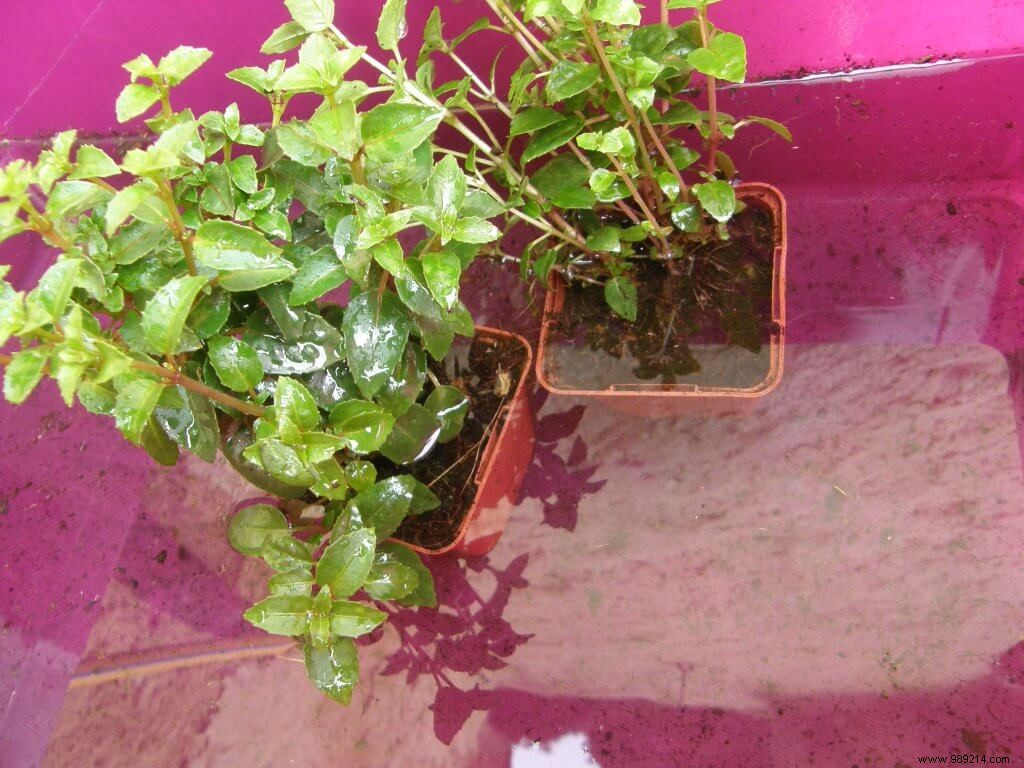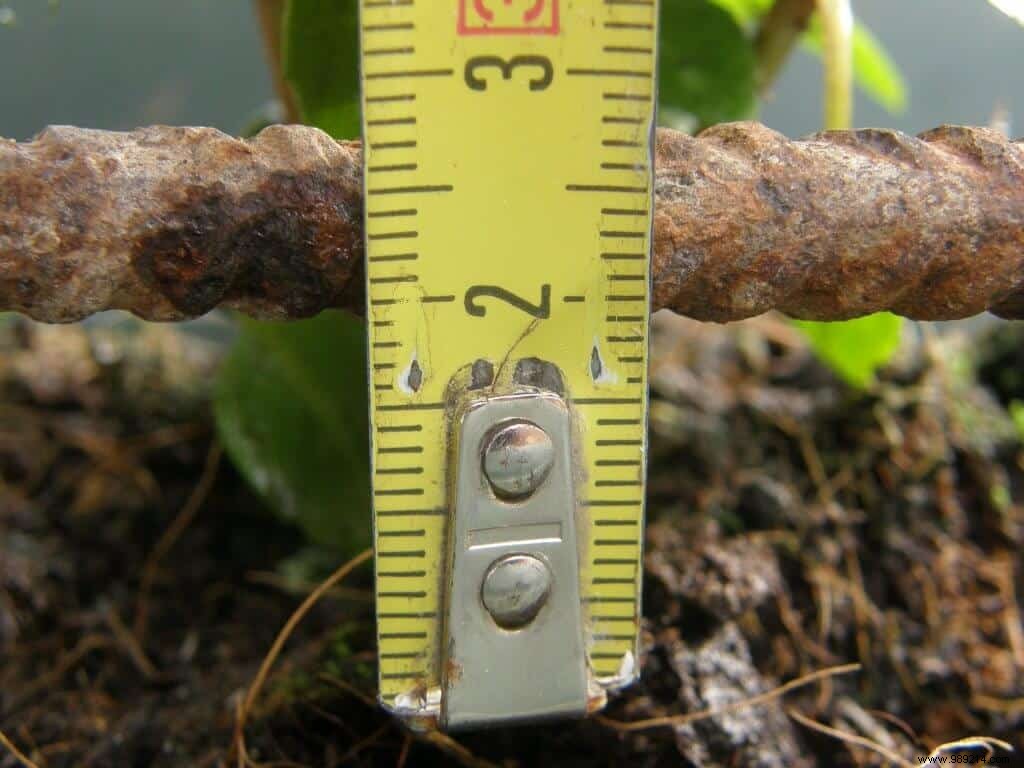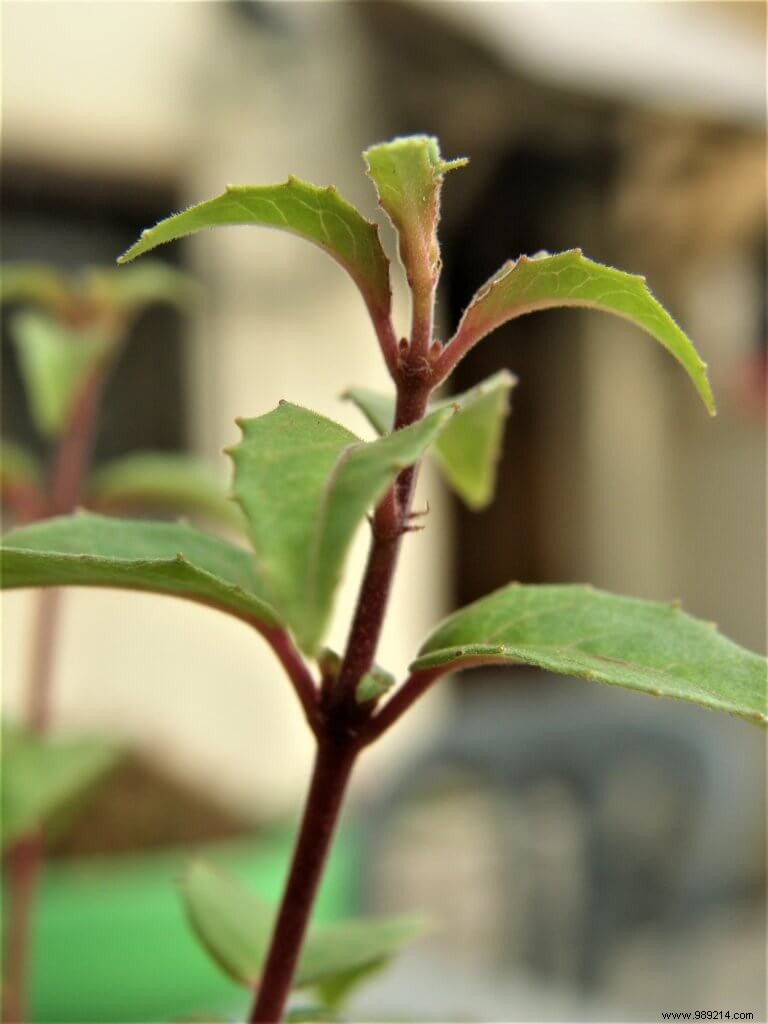It's time to flower our balconies and terraces, to put color in the pots, to prepare the flowering of the beautiful season. A visit to the local garden center is therefore a must. This is where you fall for the beautiful flowers with shimmering hues, don't say no, I know it... I do the same. It's called impulse buying! Still, we end up with a car trunk full of colorful hope. It's time to plant in a planter.
So, I have the planter, the soil, the flowers. What is missing ? The little pebbles!
Last year's planter was washed and disinfected with white vinegar to prevent dormant diseases...
I lay a bed of gravel in the bottom. But as I miss the gravel, I give a big hammer blow on an already cracked tile. Here, I have the right amount to line the bottom of the planter. This operation is essential. This prevents the earth from blocking the evacuation holes which are used to eliminate excess water but also allow gas exchange. Because the roots, they breathe!

Planting in a planter:drainage
Come on! a little walk in the basin of water. Do not plant a dry root ball because moistening it is more difficult afterwards. A few minutes are enough for the water to penetrate well into the heart of the root ball.

watering by soaking
This is the time to put the "special flower planter" soil or something similar in your container. But how much? I practice like this:I lay a ruler across the planter. The top of the clod must be 2 cm below the bar. During the final filling with the soil, there will be 1 cm of substrate on the root ball. There will therefore remain 1 cm to reach the top of the planter, it is a reserve for watering water. But hey, we're not within 2 mm either...

The root ball is 2 cm below the top edge of the planter
Small operation to practice with the fingertips, pinching. Cut off his head he'll grow arms! The photo shows a fuchsia. I removed the top of each stem so that it thickens. One cut, and it's 2, even 4 more shoots. And therefore more flowers, which is the goal.

fuchsia before pinch

fuchsia after pinching
After putting the planter in place, I add a little special organic flower fertilizer, and I lightly scrape the surface to bury it a little. All that remains is to water it thoroughly. The water will settle the substrate sufficiently. Nevertheless, it is sometimes necessary to add a little compost because the level of soil has dropped and the clods may no longer be covered.
All that remains is to wait, watch for the scratching cat, the voracious slug, the colonizing aphids... But yes! you'll see, everything will be fine!
Read on to learn more about which potting soil to use
And if you want to invest in a great planter…